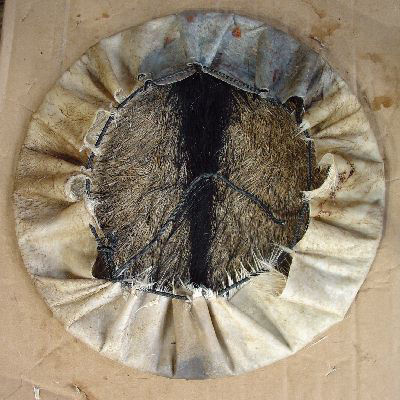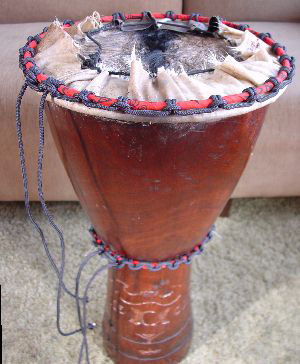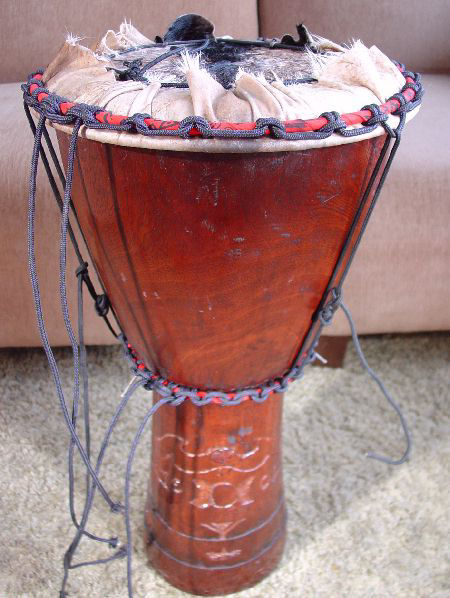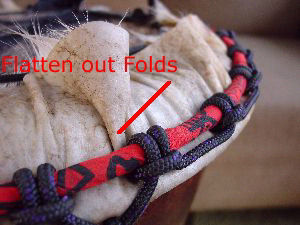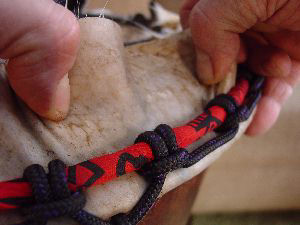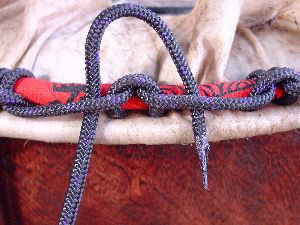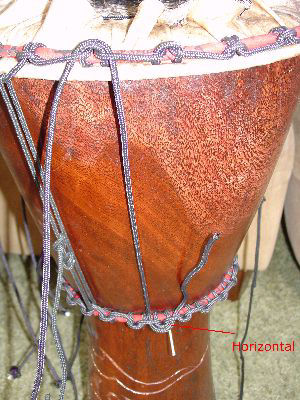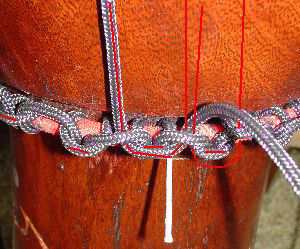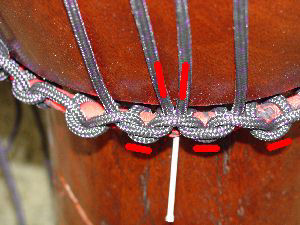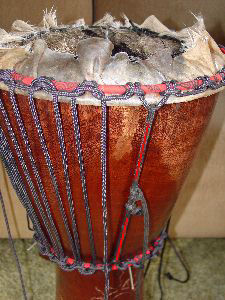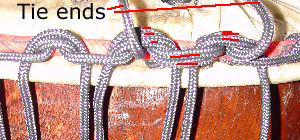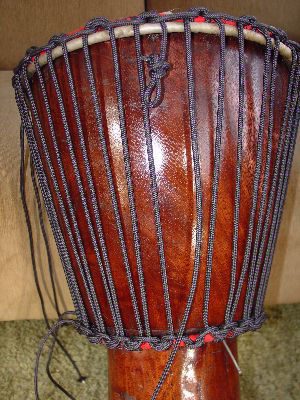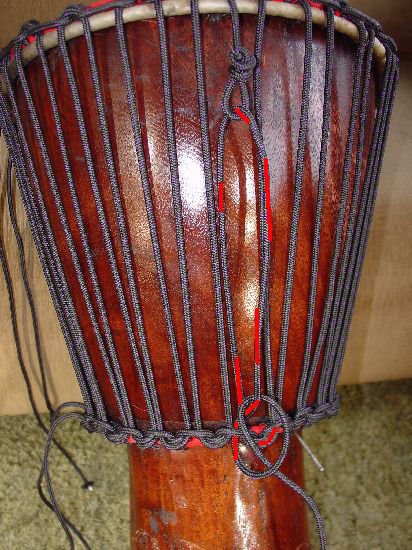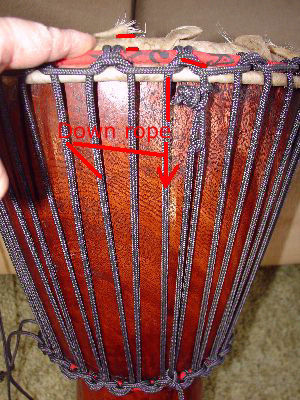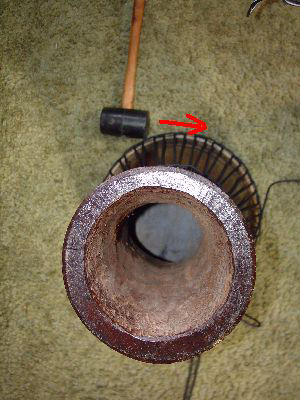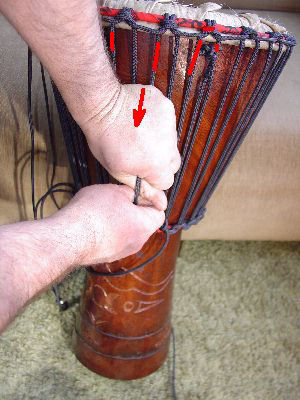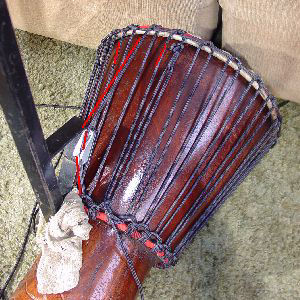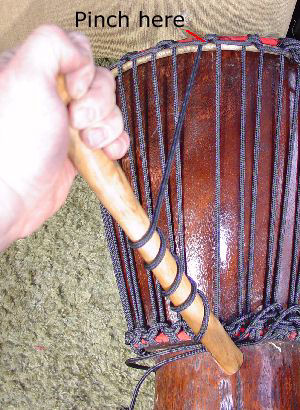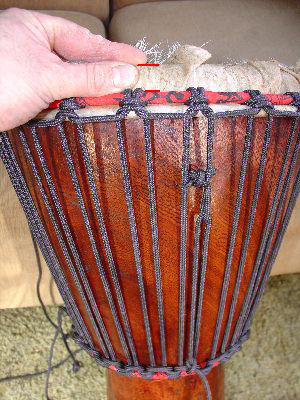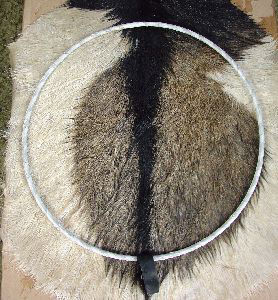
Align Hide Ring
Now I lay out the skin. The neck end is where I'll play (the thickest skin at 12 o clock) I have aligned my tape with the tail end spine, so when O put it on the drum and line it up with the drum design, my oval ring will be aligned with the oval of the drum it was bent to follow. If your drum is pretty round and you have no design to align to, no worries here, just slap it the hide ring on the hair!

Loop Knot
Oops, just one more knot to show you. You need a knot for loops that won't close with tension. You can make a loop at the end and just tie a half hitch with the doubled rope, but this knot is nicer. First tie a half hitch in the very end of the rope and pull it tight. Then ahead of the knot twist the rope 1/2 a turn to form a loop. Take and push a loop of rope JUST ahead of the knot and push the loop through twist loop, leaving the knot right on the outside of it.
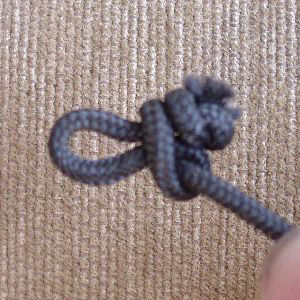
Finished loop Knot
Snug it up and the loop pushed through becomes the non closing loop. With practice you can make just the minimum size loop with the minimum amount of rope...and important quality to get you out of trouble sometimes! This knot can also ALWAYS be untied, another great characteristic!
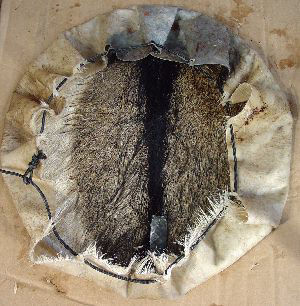
Thread Draw String
I make this knot on a say 30" piece of rope (hey make four, you'll need another three soon anyway!) and using it like a needle, thread it in and out of your 16 slits you made in the hide edge, making a draw string around the hide ring.
